Due to its remote northern breeding areas, much of what is known about Black Scoters range and reproduction has been learned relatively recently. Pairs are generally solitary, though while molting and during winter larger flocks may form. Rushing chases by Black Scoter males may occur during courtship.
It is thought that Black Scoters do not breed until age two, and there is little data to indicate how long they typically live. Both hunting and oil spills are known sources of mortality, but relatively little information is available regarding the major sources of mortality.
Description of the Black Scoter
BREEDING MALE
The Black Scoter is a sea duck with a stocky build and mostly dark plumage.
– Black plumage.
– Yellow knob on bill.
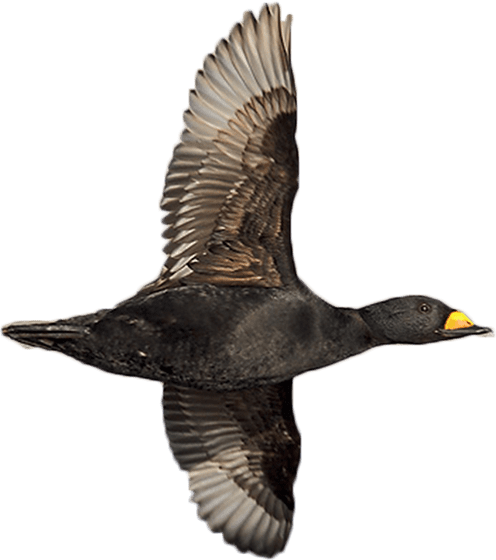
Photograph © Glenn Bartley.
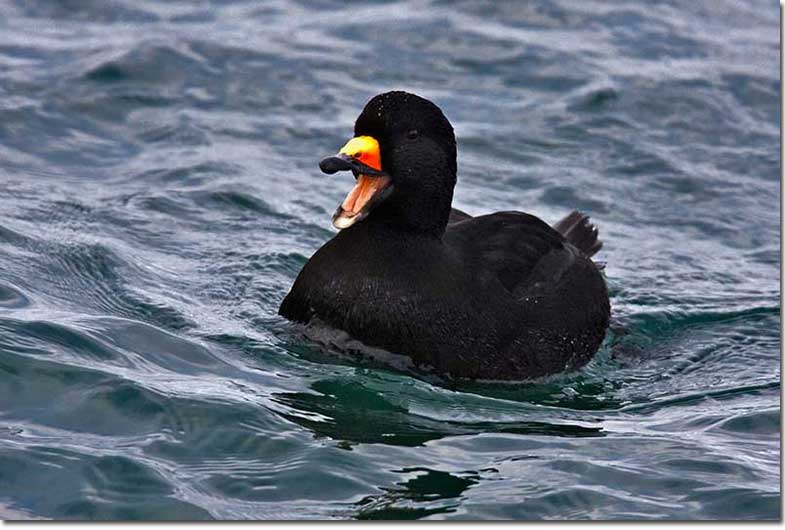
Calling male. Nesting occurs in Alaska and northeastern Canada, resulting in two distinct populations. Photograph © Alan Wilson.
Female
Brownish plumage with a paler lower face and throat.
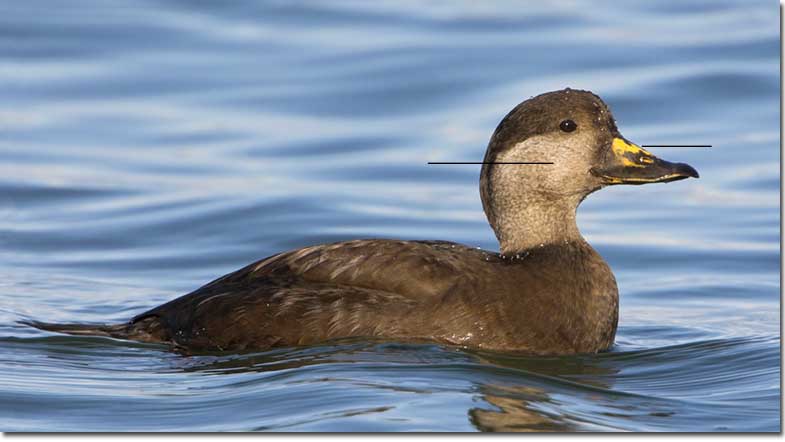
Adult females have a pale cheek and neck with a darker cap. The amount of yellow on the bill varies and is not always visible. First winter males resemble females but will have a paler chest. Photograph by Glenn Bartley.
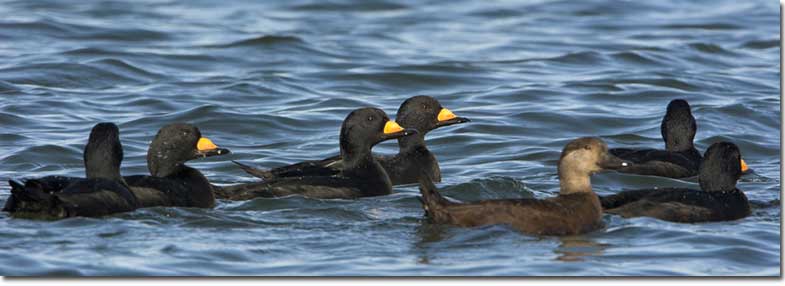
Note the single female in this small group of males. Photograph by Glenn Bartley.
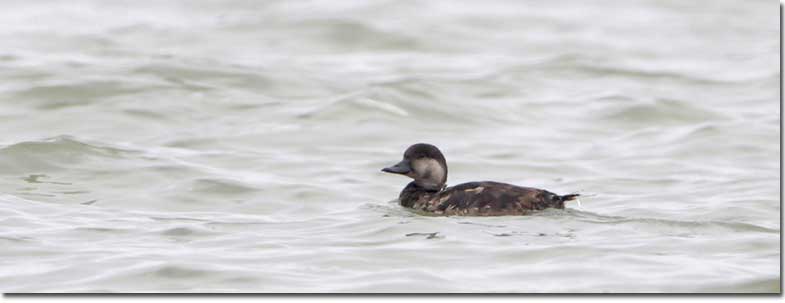
Female. Note the thin bill and high forehead. Photograph © Alan Wilson.
Seasonal change in appearance
None.
Juvenile
Similar to adult females.
Habitat
Coastal areas.
Diet
Mollusks and insects.
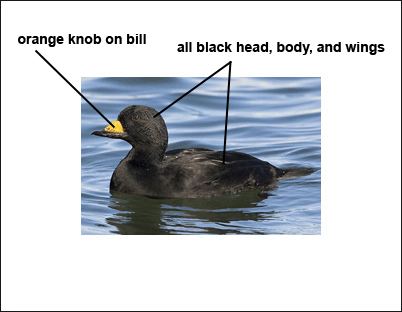
Behavior
Forages by diving.
Range
Breeds in Alaska and northeastern Canada and winters along both coasts of North America. Population generally stable.
Fun Facts
Black Scoters are rare visitors to large inland lakes during the winter.
While usually seen in pairs during the breeding season, scoters often form small flocks during the winter.
Vocalizations
Males make a long whistling sound.
Similar Species
White-winged Scoter
White-winged Scoters have white wing patches, white below and behind the eye.
Surf Scoters
Male Surf Scoters have white head patches, while females have dark faces with small white patches
Nesting
The nest is plant-lined depression on the ground.
Number: 8-9.
Color: White or buff.
Incubation and fledging:
– Young hatch at 27-31 days.
– Young fledge (leave the nest) soon after hatching but remain with the female for some time.

